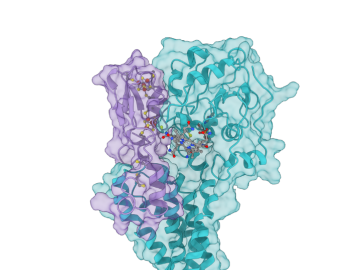
Filter News
Area of Research
- (-) Energy Science (57)
- (-) Neutron Science (30)
- Advanced Manufacturing (3)
- Biological Systems (1)
- Biology and Environment (68)
- Biology and Soft Matter (1)
- Building Technologies (1)
- Computational Biology (2)
- Computational Engineering (3)
- Computer Science (15)
- Fuel Cycle Science and Technology (1)
- Fusion and Fission (31)
- Fusion Energy (13)
- Isotope Development and Production (1)
- Isotopes (11)
- Materials (63)
- Materials for Computing (12)
- Mathematics (1)
- National Security (26)
- Nuclear Science and Technology (41)
- Nuclear Systems Modeling, Simulation and Validation (2)
- Quantum information Science (8)
- Supercomputing (117)
News Topics
- (-) Advanced Reactors (6)
- (-) Biomedical (20)
- (-) Computer Science (35)
- (-) Microscopy (10)
- (-) Nuclear Energy (9)
- 3-D Printing/Advanced Manufacturing (83)
- Artificial Intelligence (14)
- Big Data (7)
- Bioenergy (31)
- Biology (18)
- Biotechnology (5)
- Buildings (38)
- Chemical Sciences (17)
- Clean Water (10)
- Composites (18)
- Coronavirus (22)
- Critical Materials (9)
- Cybersecurity (9)
- Energy Storage (74)
- Environment (59)
- Exascale Computing (2)
- Fossil Energy (3)
- Frontier (3)
- Fusion (2)
- Grid (39)
- High-Performance Computing (8)
- Hydropower (3)
- Isotopes (1)
- Machine Learning (10)
- Materials (46)
- Materials Science (48)
- Mathematics (3)
- Mercury (3)
- Microelectronics (1)
- Molten Salt (1)
- Nanotechnology (17)
- National Security (7)
- Neutron Science (121)
- Partnerships (12)
- Physics (10)
- Polymers (12)
- Quantum Computing (1)
- Quantum Science (8)
- Security (8)
- Simulation (4)
- Space Exploration (6)
- Statistics (1)
- Summit (9)
- Transportation (68)
Media Contacts

Twenty-seven ORNL researchers Zoomed into 11 middle schools across Tennessee during the annual Engineers Week in February. East Tennessee schools throughout Oak Ridge and Roane, Sevier, Blount and Loudon counties participated, with three West Tennessee schools joining in.

A new tool from Oak Ridge National Laboratory can help planners, emergency responders and scientists visualize how flood waters will spread for any scenario and terrain.

Six scientists at the Department of Energy’s Oak Ridge National Laboratory were named Battelle Distinguished Inventors, in recognition of obtaining 14 or more patents during their careers at the lab.

Six ORNL scientists have been elected as fellows to the American Association for the Advancement of Science, or AAAS.

To better understand how the novel coronavirus behaves and how it can be stopped, scientists have completed a three-dimensional map that reveals the location of every atom in an enzyme molecule critical to SARS-CoV-2 reproduction.

The Transformational Challenge Reactor, or TCR, a microreactor built using 3D printing and other new advanced technologies, could be operational by 2024.

Four research teams from the Department of Energy’s Oak Ridge National Laboratory and their technologies have received 2020 R&D 100 Awards.

A team led by ORNL created a computational model of the proteins responsible for the transformation of mercury to toxic methylmercury, marking a step forward in understanding how the reaction occurs and how mercury cycles through the environment.

Pick your poison. It can be deadly for good reasons such as protecting crops from harmful insects or fighting parasite infection as medicine — or for evil as a weapon for bioterrorism. Or, in extremely diluted amounts, it can be used to enhance beauty.

Oak Ridge National Laboratory scientists evaluating northern peatland responses to environmental change recorded extraordinary fine-root growth with increasing temperatures, indicating that this previously hidden belowground mechanism may play an important role in how carbon-rich peatlands respond to warming.


